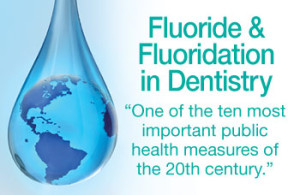“Many children in this area have families that are unable to care for them. Fortunately, there are orphanages here in town that are able to care for small babies until their families are able to care for them again. The situation here is desperate, and many of the babies brought to the orphanages are severely malnourished.â€Â                                                                  Phil and Laura Olaniyi
           Laura and Phil formerly lived in Durango but moved to Mozambique where they are starting an orphanage, “Heart for the Needyâ€. Let’s look at some of the statistics for this East African country.
Mozambique is one of the fastest growing countries in the world; women there have an average of almost 6 children. The country’s infant mortality is tragic, with 83 of every thousand children dying before they reach one year of age. This is one reason for the high fertility, since couples usually don’t choose to have small families until they know their children will live to adulthood. The maternal mortality rate is also very high. The average per capita income is only $3 a day.
These statistics don’t begin to tell the anguish of a mother who cannot care for her child, or the grief of a family who cannot care for a baby whose mother died in childbirth. Fortunately there are compassionate people such as Laura and Phil to care for these abandoned children. Even though they are far away I feel close to them in a way since I have worked with both of them—and I helped when Laura was born.
I agree with a statement Laura made on her blog: “Let’s be honest for a second, though. An orphanage is only putting a Band-Aid on the real problem – poverty & oppression.â€
I admire Laura for being so perceptive, but I want to add another cause of “the real problemâ€â€”undesired fertility. In Mozambique only a quarter of girls are enrolled in secondary school, and only 11% of married women use modern contraception. The fertility of non-educated women is twice that of women with secondary school education, 6.8 and 3.4, respectively. This is an example of the wonderful power of educating women!
In the developing world young women often have very little power or control over their lives. Older men approach them with offers of money or coveted goods in exchange for sex. Rape is also common. The story of such an unfortunate young woman is told in the short YouTube video “Not Yet Rainâ€, filmed in Ethiopia.
“An ounce of prevention is worth a pound of cure.†Karen Shragg has used a similar expression in the title of her book: “Move Upstream: A Call to Solve Overpopulationâ€. In it Karen points out that so many of the problems we face, including climate change, ocean fisheries depletion, and extinction of species, are caused by increasing human overpopulation. Similarly, the need for orphanages is (in part) a symptom of unwanted fertility.
I have two friends who live in Bayfield who spent part of their childhoods in orphanages. Both are productive citizens who might not have survived if there had not been institutions to care for them as small children. In addition, relatives adopted a boy from the Democratic Republic of Congo when he was 3 years old. Mason’s birth parents died when he was small, so his grandmother took over his care. Unfortunately, she was unable to meet his needs then he was well cared for in an orphanage. Mason has joined a loving family in Durango who are giving him opportunities that would be impossible in Congo.
Orphanages provide a wonderful opportunity to care for some of the world’s most vulnerable children. There are few orphanages left in the U.S.A., but in developing countries there are many, and there is much need. As Laura points out, however, orphanages are just a Band-Aid for the real problems—terrible poverty, low status of women and many unplanned pregnancies.
We should “move upstream†to get at the root of the problem rather than just using Band-Aids. Steps that will help include supporting international family planning organizations such as the Population Media Center, and help the Population Connection terminate the Helms amendment, which restricts government funded agencies from even talking about abortion.
Until we have solved the problem of unplanned pregnancies, the only humane action is to care for orphans the way Laura and Phil are. I am sending them a check to help them as they build Heart for the Needy. What a boon it will be for orphans in Mozambique!
© Richard Grossman MD, 2016

